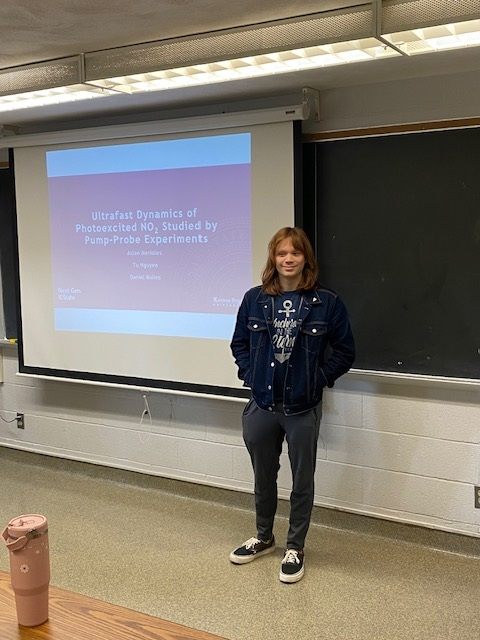Ultrafast Dynamics of Photoexcited NO2 Studies by Pump-Probe Experiments
Aslan Merioles, Missouri University of Science and Technology, Physics, Math Major
Mentored by Dr. Daniel Rolles

Photoexcited triatomic molecules (and anything larger) tend to not follow the Born-Oppenheimer approximation when excited to their threshold dissociation energy due to having conical intersections in their potential energy curves where electronic and nuclear motion occur in comparable time scales. Thus the molecule is able to follow different paths along its energy curve to dissociate. This can manifest in multiple different behaviors, such as bond length and angle changes.
By performing a form of CEI (Coulomb Explosion Imaging) using pump - probe techniques, we are able to glean some information on the behavior of molecules when they aren't following the Born-Oppenheimer approximation. This is done by observing the KER (Kinetic Energy Release) of the molecule whenever it is exploded with the probe pulse. KER tells us where the molecule is on its potential curve at the time of the probe pulse. By observing KER as a function of time difference between the pump and probe pulses, the behavior of the molecule after the pump pulse is able to be seen.

Fig. 1. Example of a conical intersection between the potential curve of ground and energized state molecule. Figure taken from Tehlar A et al 2018 J. Chem. Phys. 149 034307.
 Fig. 2. Time of flight graph with labeled ions
Fig. 2. Time of flight graph with labeled ions

Acknowledgments
The Physics REU program is supported by the National Science Foundation under Award No. 2244539
The J.R. Macdonald Laboratory is supported by the Chemical Sciences, Geosciences, and Biosciences Division, Office of Basic Energy Sciences, Office of Science, U.S. Department of Energy, Grant no. DE-FG02-86ER13491